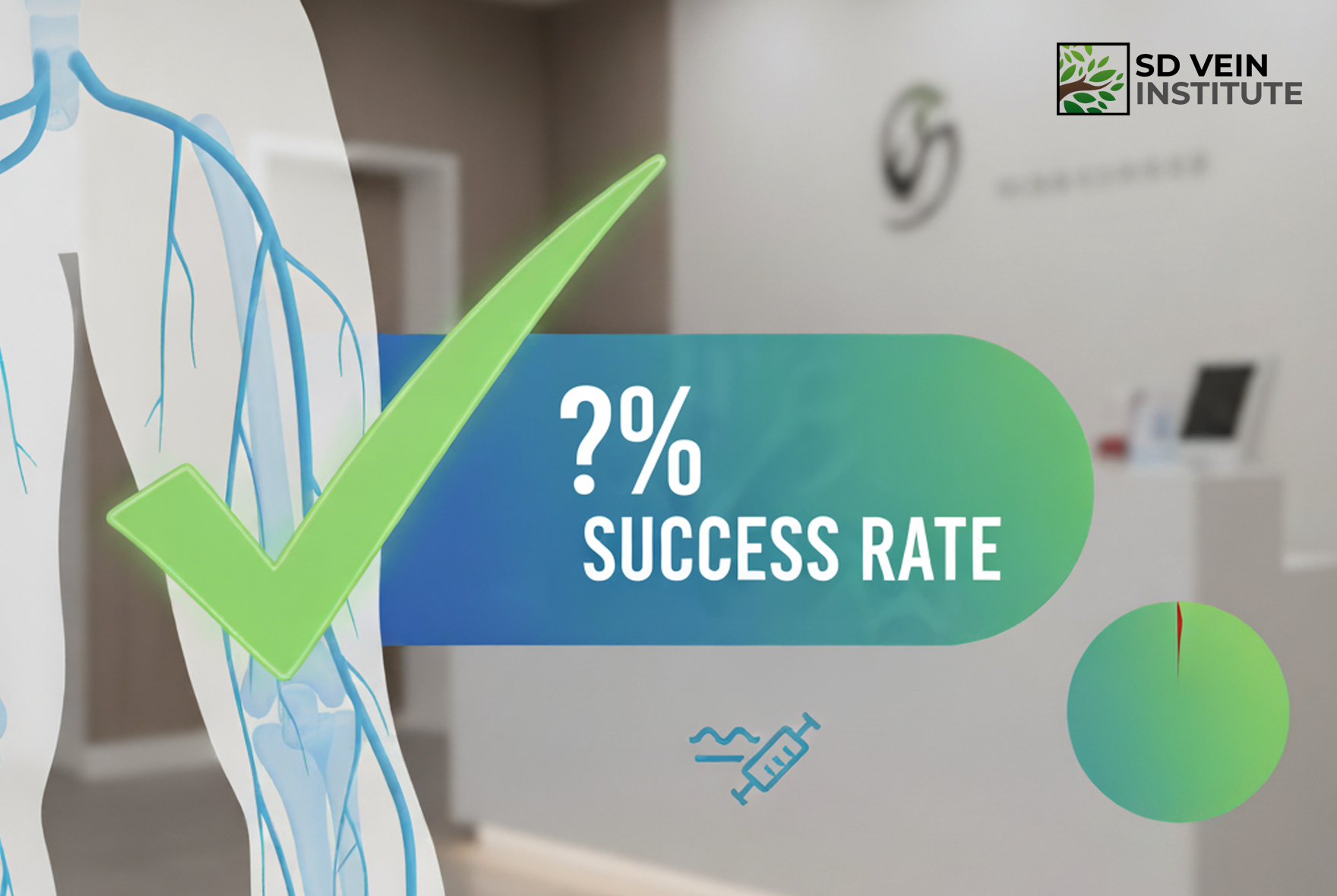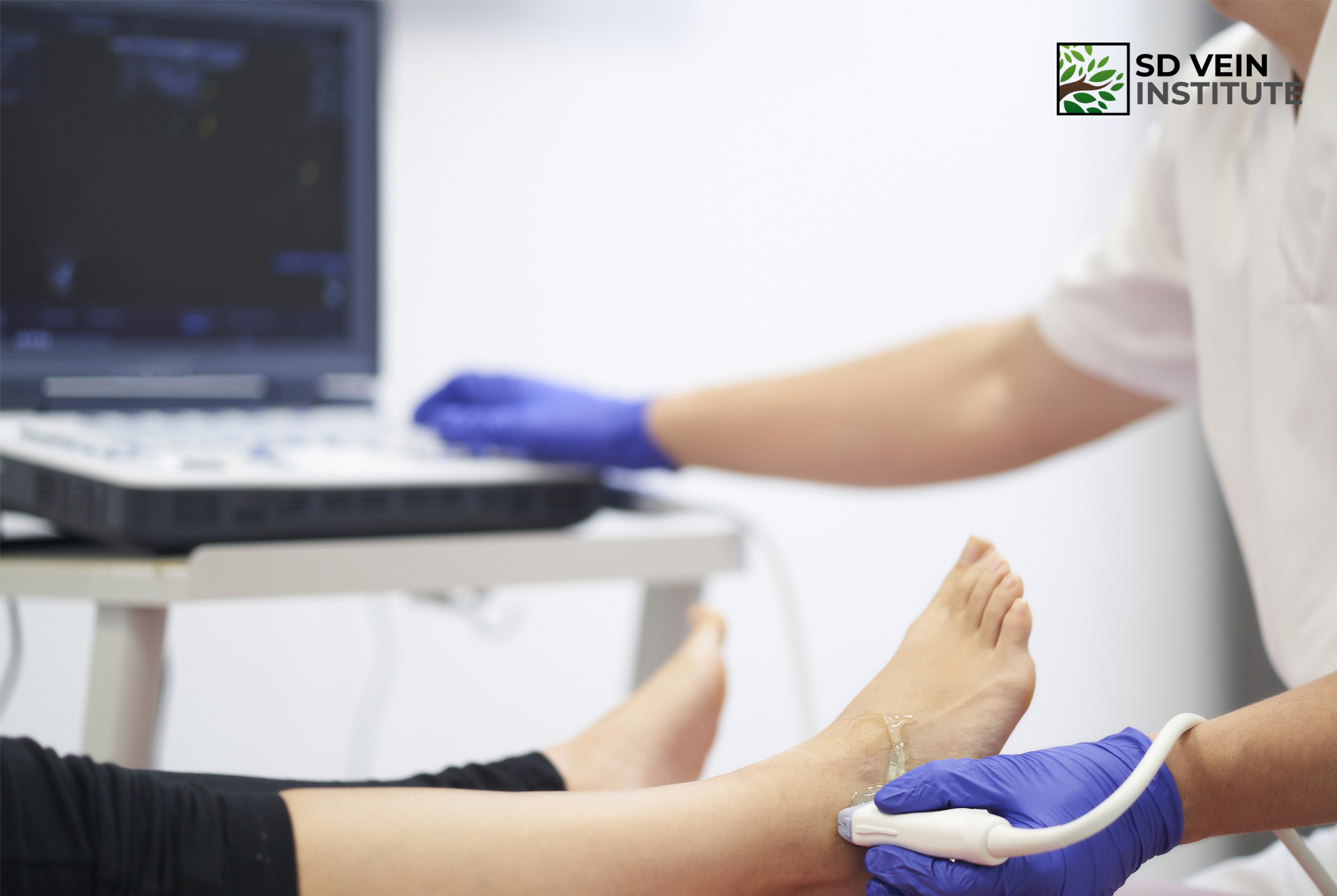Are There Vein Treatments Specifically for Men?
TLDR
• Men can suffer from varicose and spider veins just like women.
• Treatments include sclerotherapy, laser therapy, and lifestyle changes.
• Early consultation with a vein specialist is crucial for effective treatment.
• Prevention includes exercise, maintaining a healthy weight, and avoiding prolonged sitting.
What is the Success Rate of Vein Procedures?
TLDR
Vein procedures are generally successful with high patient satisfaction.
Success rates vary by procedure and patient condition.
Minimally invasive procedures offer effective results with minimal downtime.
Consult a vein specialist in San Diego for personalized advice.
How Soon Will I See Results After Treatment?
TLDR
Treatment results vary based on procedure and individual health.
Varicose and spider veins respond differently to treatments.
Immediate symptom relief may occur, but visible results take time.
Consult your vein specialist in San Diego for personalized timelines.
Will I Need Anesthesia During Vein Treatment?
TLDR
Anesthesia use in vein treatments depends on the procedure type.
Commonly used anesthesia includes local anesthesia, tumescent anesthesia, and general anesthesia.
Different vein treatments, such as sclerotherapy or laser treatment, have varying anesthesia requirements.
Understanding the procedure and anesthesia helps reduce anxiety and set expectations.
Consult a healthcare provider to determine the most suitable anesthesia and treatment plan.
How Long Does Each Treatment Session Last?
TLDR
Varicose vein treatment in San Diego: Sessions typically last 30-60 minutes.
Spider vein removal in San Diego: Generally 15-45 minutes per session.
Sclerotherapy in San Diego: Takes about 30-45 minutes.
Initial consultations: Usually last about an hour.
Always consult your healthcare provider for personalized treatment details.
What’s the Difference Between Surgical and Non-Surgical Vein Treatments?
TLDR
Varicose veins and spider veins are common vein issues requiring treatment.
Surgical treatments include vein stripping and phlebectomy.
Non-surgical options include sclerotherapy, laser therapy, and radiofrequency ablation.
Each treatment varies in invasiveness, recovery time, and effectiveness.
Consult your healthcare provider to determine the most appropriate treatment.
Recent studies highlight advancements in non-surgical procedures.
Schedule a consultation with a vein specialist in San Diego for personalized advice.
What Shoes or Clothing Can Help Improve Vein Health?
TLDR
Proper shoes and clothing can promote vein health.
Compression stockings are effective for improving circulation.
Avoid high heels and tight clothing that restrict blood flow.
Consult a vein specialist for personalized advice.
Recent studies show compression wear reduces vein-related symptoms.
How Early in Life Can Vein Problems Start?
TLDR
Vein problems can start at any age, often noticed in young adults.
Genetics, lifestyle, and underlying conditions contribute to early vein issues.
Symptoms include visible veins, swelling, and leg discomfort.
Treatments: lifestyle changes, compression therapy, and medical procedures.
Prevention: maintain healthy weight, exercise, and avoid prolonged standing.
Consult a healthcare provider for personalized advice and treatment options.
How Many Visits Will I Need for Vein Treatment?
TLDR
Number of visits varies by treatment and individual needs.
Initial consultation assesses your condition.
Follow-up visits depend on treatment type: sclerotherapy, laser treatments, or surgery.
Lifestyle changes can reduce need for future visits.
Consult a vein specialist San Diego for personalized advice.
Can You Treat Hand and Arm Veins?
TLDR
Hand and arm veins can be treated for aesthetic and medical reasons.
Common treatments include sclerotherapy, laser therapy, and phlebectomy.
Consult a vein specialist to determine the best treatment plan.
Prevention includes maintaining a healthy lifestyle and managing underlying conditions.
Recent studies show advancements in minimally invasive procedures.
What is Sclerotherapy and How Does It Work?
TLDR
Sclerotherapy is a medical procedure for treating varicose and spider veins.
It involves injecting a solution into the affected veins, causing them to collapse and fade.
Often used for cosmetic improvements and to relieve symptoms like pain or swelling.
Consult a vein specialist to determine if sclerotherapy is suitable for you.
Preventive measures and lifestyle changes can help manage vein health.
What Role Does Ultrasound Play in Diagnosing Varicose Veins?
TLDR
Ultrasound Imaging: Key tool for diagnosing varicose veins.
Symptoms: Swelling, pain, itching, and visible twisted veins.
Treatment Options: Include sclerotherapy, endovenous laser treatment, and surgery.
Prevention Tips: Regular exercise, weight management, and leg elevation.
When to See a Doctor: Persistent symptoms or vein changes.
FAQs: Cover causes, risks, and treatment recovery.
Are Varicose Veins Dangerous, or Just a Cosmetic Issue?
TLDR
Varicose veins can be more than a cosmetic issue, potentially leading to complications.
Symptoms include aching, heaviness, and swelling.
Treatments range from lifestyle changes to medical procedures.
Consult a healthcare provider for personalized advice.
Prevention includes regular exercise and weight management.
Recent studies show advancements in less invasive treatments.
Do Varicose Veins Always Get Worse Over Time?
TLDR
Varicose veins can worsen over time due to factors like age and genetics.
Symptoms include pain, swelling, and visible bulging veins.
Treatments such as sclerotherapy and laser therapy are effective.
Lifestyle changes can prevent worsening.
Consult a vein specialist for personalized advice.














